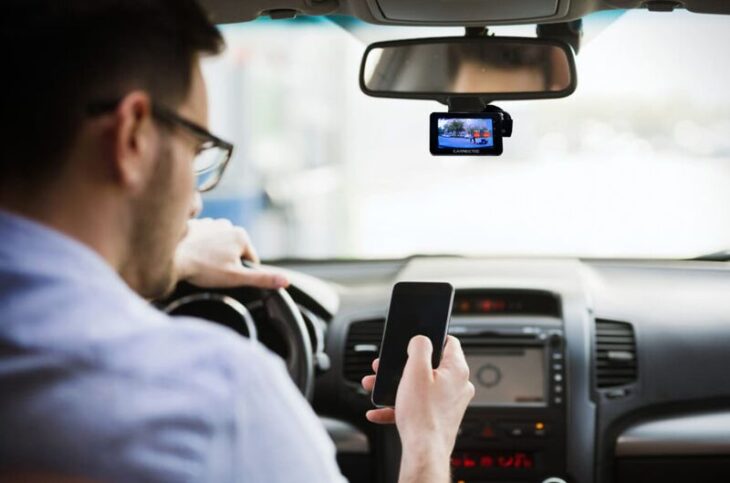If you’re one of the many corporate employees who occasionally needs to travel in company-owned vehicles like vans, buses, cars, or even jets, it’s essential to know the protocols that are considered best practices for companies all over the world. Of course, you should always defer to specific corporate policy where you work, but in the absence of written rules, it’s smart to understand some general default guidelines. Business travel protocols make very good sense, even if people don’t always agree with them or enjoy following them.
When you stop to think about it, a company is exposed to high levels of legal risk whenever workers or customers travel in fleet vehicles. Concerns about safety, acceptable behavior, fuel use, and proper routing should always be on your mind when using or operating a company vehicle. Here’s a brief look at some core rules for using company-owned cars, trucks, buses, and vans (and in some cases, jets).
Contents
1. Ask About Alternatives

img source: traveltipsblog.org
If you don’t feel comfortable using company-owned transportation, ask whether it’s okay if you take your own car, fly, or take a train to the destination. In situations where you don’t want to be in close quarters with a co-worker, to name just one example, seek out a supervisor and inquire about alternatives. Never assume that you must go on the trip with everyone else in the company car. Most employers will work with your preferences if you let them know in advance and explain your reasons clearly.
2. Know the Fleet Management Policy
If your organization does not have a written travel and fleet management policy, it should. Ask your supervisor how to find out about the official company rules pertaining to using business conveyances for deliveries, business trips, and service calls. For instance, if there is a written guide, be sure to read it through completely before your first trip in a company-owned vehicle. Many corporations use advanced telematics systems within a comprehensive fleet management system, like those from Samsara, so you’ll learn a lot just by reviewing how your company deals with transportation.
3. Assume You’re Being Observed

img source: trendhunter.com
Whether you like it or not, most modern forms of commercial transportation, and that includes your company’s trucks, cars, and vans, are equipped with various kinds of surveillance equipment. At the very least, these devices, like standard, driver-facing cameras, are used to enhance the safety of all occupants and travelers. However, due to the law of unintended consequences, some organizations use high-tech devices to keep a close eye on employees.
The point about these kinds of components is that you never really know what you’re up against. Any form of non-personal transportation could, theoretically, include listening devices, small cameras, voice recorders, or video recording units. When traveling for work, assume your boss is seated next to you.
4. No Smoking or Alcohol
For some reason, people often assume that once they leave their regular office space, they can cut loose and engage in all sorts of behavior that would be considered unacceptable in a work situation. Keep in mind that just because you’re on the road and perhaps relaxing with coworkers, you’re still on the job. Technically, you’re still in the office, except that it’s a four-wheeled version of the one you are accustomed to.
The rule about smoking varies from employer to employer, and a few organizations do have rather lax rules on the subject. But, in the vast majority of situations, avoid smoking inside a company car, truck, or van. Also, if you like your job and want to keep it, remember to avoid consuming alcohol while on company time or on company property, and that includes wheeled forms of property. At the end of the day, in the hotel lounge, it’s acceptable to have a drink or two, as long as you can handle it and behave responsibly in every instance.
5. Stick to Schedules

img source: eatsleeplovetravel.com
Most business trips include a written schedule of events, stops, etc. The simplest way to adhere to official policies and guidelines is to not vary things up, improvise, or add extra stops to the original itinerary. If you’re making a series of sales calls, for example, and want to add a stop or two to the route, be sure to note the reasons, get approval, or abide by whatever your organization’s policy is in this area.
6. Drive Safely
You know how you drive in your new car on the way home from the dealership? That’s how you should operate any vehicle that doesn’t belong to you, namely paying complete attention to the road, abiding by all laws, never using alcohol while driving, and keeping both hands on the wheel.
7. Only Travel to Authorized Locations

img source: travelandleisure.com
Using authorized vehicles for unauthorized travel presents a much larger problem than most people realize. For instance, if you’re on a trip with co-workers in the business-owned van and decide to take a side trip, for whatever reason, you could be asking for big trouble. Some insurance carriers can decline full coverage for such excursions, which can technically be considered personal instead of official. The best way to stay safe and abide by travel policies is to only go where you’re allowed to, based on the purpose of the trip and parameters laid out in any written policy guidelines.
8. Keep Written Records
Even when automated fleet systems maintain a full set of automatic records, it’s wise to keep a small note card of digital record of your own, listing travel routes, hours on the road, locations of stops, arrival times, and other pertinent facts. Automated programs and apps aren’t 100 percent reliable, so a simple log of key data can be a real savior in the event of a system failure, accident, or other unforeseen situation.
9. Know What to Do in Case of an Accident

img source: neamb.com
Just as you would do on a personal road trip vacation, keep contact names and numbers handy should you be involved in an accident. At a minimum, have phone numbers of insurance providers, key company personnel who need to be informed, and your own medical insurance contacts (like doctors and coverage information should you be injured).
